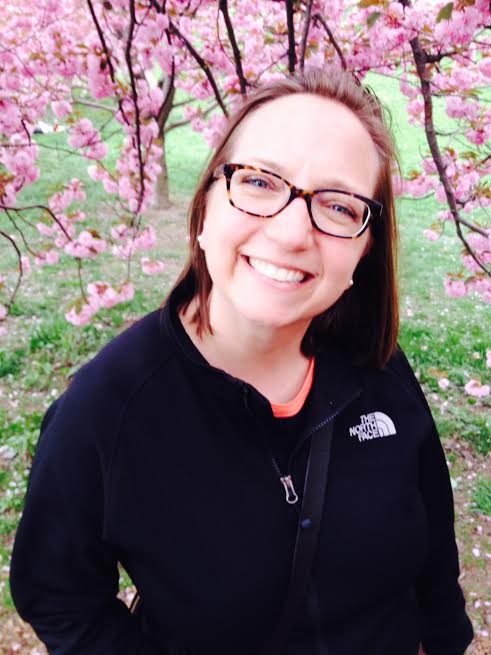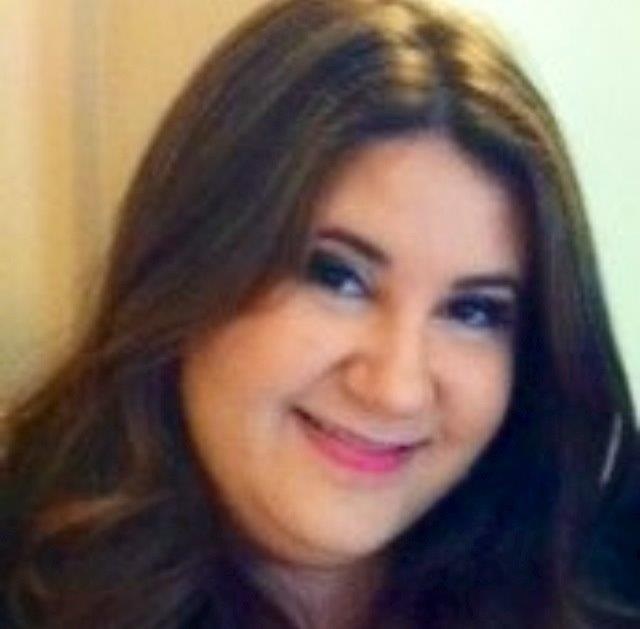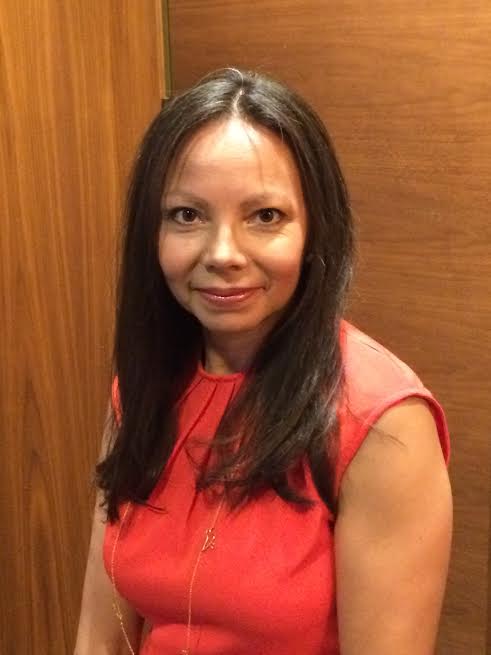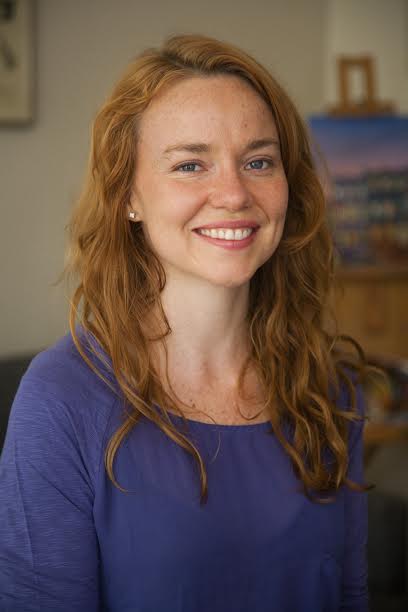
 Annie Greene Bonz
Annie Greene Bonz
Art Therapy, MA
Lead Clinician - START Program for Unaccompanied Minors, MercyFirst
Brooklyn, New York, United States
"I think the most important part of my experience in the graduate Art Therapy program was my interaction with faculty; their knowledge, encouragement and support pushed me to figure out the best way I can utilize my skills."
What does your typical work day look like?
I'm providing direct clinical services to unaccompanied minors coming from El Salvador, Guatemala and Honduras, in addition to providing training/supervision to the clinical team.There is no typical day, which makes my work exciting and unique. As a shelter program providing services to unaccompanied minors (through Office of Refugee Resettlement), I may be conducting a child trafficking assessment with a recently arrived child in our program, I may be providing support to a clinician working with a child in crisis, or I may be conducting an individual or group art therapy session.
What was your favorite class in the Master's program??
I believe the most influential class I took was Renee's Art Therapy with Adults class, during my final semester. I think it was the combination of preparing my thesis and synthesizing everything I had learned throughout the program - as well as her emphasis on attachment theory, and her selection of readings for class (including Wallin's Attachment in Psychotherapy and McWilliams' Psychoanalytic Diagnosis).
Are there any stories you would like to share about your work as an Art Therapist?
The children I'm working with are very open to expressing themselves through art. One group focused on the importance of supporting other vulnerable populations in the world through social justice movements.The group emphasized the words compassion and understanding as they described their images, which demonstrated 'success' to me as the children internalized and then expressed a need to help others, despite the difficult journey they had just endured and distance from their families.
 Jessica Fertig
Jessica Fertig
Art Therapy, MA
Senior Art Therapist, Bronx Psychiatric Center
"This program provided me with the tools necessary to fine-tune the way I think about the art- making process, craft how I interact and relate to others and sharpen my intuition and analytical mind."
What do you do in a typical work day?
I work as an Art Therapist in a 24 hour supervised outpatient residence. The program provides transitional care and restorative services for consumers who are clinically stable, but require additional support and assistance before discharge to longer term community settings. A typical day involves morning rounds and other clinical meetings, paperwork, supervision as well as several open studio and art directive based groups designed to address shared psycho-social issues of its attendees.
What made you choose Steinhardt's Master's program?
I became interested in NYU’s program for a variety of reasons. What originally caught my attention was the school’s reputation of being one the most innovative institutions in the field of art therapy. I ultimately selected this program because it felt like the perfect fit for me from the beginning to the end. I knew early on that I would be receiving an exemplary education, learning from highly skilled professionals in this field and absorbing as much invaluable information and experience as possible in my time at NYU.
What career guidance would you offer to prospective graduate students interested in this program?
Be passionate and advocate for the field of art therapy because it is that hunger that will prove to your employers that you are a valuable member of the staff. It will be a difficult two years in which you will find yourself being challenged on a daily basis.
In our efforts to share our program with the public, we are eager to share stories that exemplify the benefits of art therapy. Please share a brief vignette that highlights the success of art therapy treatment.
I have been lucky enough to see some remarkable things happen in an art therapy room. I recently had a student intern who I assigned to work individually with a young male with Schizophrenia who suffers from depression. Being able to watch the therapeutic progression of the student and her client unfold was truly a blessing for me. I watched this young man blossom and gain a stronger sense of self. He became excited to show me his art journal and was soon after discharged to his own apartment where he currently resides. Supervising the student in the process was very special for me as well. She too, like her client, blossomed and I watched her become an art therapist.
 Monica Aranibar-Duque
Monica Aranibar-Duque
Art Therapy, MA
Manager of Student Placements and Internships at The Coalition For Hispanic Family Services
Manhattan, New York, United States
"Art Therapy is a clinical profession that is rooted in creativity. In the NYU Art Therapy graduate program, the clinical and creative knowledge is embedded and combined with the internship experience. Students graduate from this program with confidence - able to perform in this field."
What do you do in a typical workday?
I identify, develop and oversee internship opportunities for all the programs in our agency. My program serves as the liaison between the agency, each program, the interns, the in-house field supervisors and the schools. We have over 30 interns, in a variety of field areas such as art therapy, social work, mental health counseling, human service, administration, non-profit management, IT and more.
A typical work-day for me includes administrative tasks such as interviewing interns, meetings with the different schools. It would include participating in Director’s meetings to strategize, develop and monitor programming. My clinical work involves running individual, family, group art therapy sessions.
Why did you choose this Art Therapy Program?
In doing my research for graduate schools, I found NYU to be a clinically sound program. I found the faculty to be well prepared and experienced. The classes sounded engaging. Being out of state, the accessibility to information was also important to me. Whenever I had questions about the program, these were answered thoroughly and promptly. When I came to New York City for the interview, my findings were confirmed. The overall experience, faculty I met, and the program as a whole felt right for me.
How did your internship experiences (in New York and abroad) impact your current work?
NYU’s internship coordinators paid close attention to my interest, experience, strengths and areas or of growth. They encouraged me to be a part of the internship selection process, while guiding me to make the best choice for a placement. The internships I chose were very challenging and really put to practice the theoretical learning in my NYU coursework.
 Daniel Blausey
Daniel Blausey
Art Therapy, MA
Owner at Studio Blue: Art+Psychotherapy, LLC
Boulder, Colorado
"The Art Therapy program at Steinhardt establishes a solid foundation in psychoanalytic and psychodynamic theory as a primary method of working. It was pivotal in determining my theoretical core, which allows for the opportunity to integrate mindfulness, meditation, cognitive, and other interventions to serve my clients by enhancing my therapeutic effectiveness."
Why did you choose this Art Therapy program?
Since reading about art therapy in high school and experiencing my first art therapy class with Bruce Moon in the mid 80’s, I knew I wanted to be an art therapist. After attending a small art school in Ohio for my BFA, I sought a robust and culturally diverse environment for my graduate education and specifically relocated to attend this program. I was drawn to the theoretical orientation and rich history of art therapy pioneers, Edith Kramer and Margaret Naumburg, being associated with the program.
What populations do you work with?
My clinical specialties include men and women with histories of childhood sexual abuse, adult sexual victimization, life transitions facing adolescents and young adults, bereavement, and HIV/AIDS. Additional expertise includes the mental health care and family support for the LGBTQ community including sexual orientation, gender identity, and the coming out process.
Did you have a favorite or most influential class that you took?
Two classes stand out for me. Art for Art Therapists allowed me to redefine and alter my personal relationship with my own artwork after attaining my BFA and working in the advertising design field for several years. Meanwhile, the Pictorial and Sculptural Analysis class introduced me to ways of interacting with and viewing art created in art therapy sessions.
 Lisette Soini
Lisette Soini
Art Therapy, MA
Senior Art Therapist at NY Creative Arts Therapists
Manhattan, New York
"I tend to be active in therapy sessions, using a blend of CBT, narrative therapy, mindfulness work and, of course, art making in working toward treatment goals."
How did your internship experiences (in New York and abroad) impact your current work?
My first internship experience was at an in-patient, psychiatric unit at Bellevue Hospital. My second was at the Coalition for Hispanic Family Services in Bushwick. No internship experience could have exposed me to as diverse a human experience as well as Bellevue did. Through my relationship with patients, I grew to understand mental illness in a way that textbooks do not teach. I also learned what it means to be a part of a cohesive and multidisciplinary treatment team. The Coalition is the place that offered me my first Art Therapy job, so that was huge in and of itself.
Which population(s) are you serving?
I started my career working with children, teens and families. At present, the bulk of my caseload consists of adults who are processing their interpersonal relationships and working towards career and life goals. This being said, I continue to see some children, teens and families. I absolutely love working with people of all ages and walks of life.
Did you have a favorite or most influential class that you took?
I do! I loved taking Ikuko’s Visual Analysis class. It taught me to discern the emotional language of art while concurrently being unattached to interpretation.
What career guidance would you offer to prospective graduate students interested in Art Therapy?
Pave your own path! The first jobs that I secured were not listed as Art therapy Jobs. Instead, I found open, clinical positions at institutions I admired and, through the interview process, I sold them not only on myself as a candidate but also on the field of Art Therapy.
